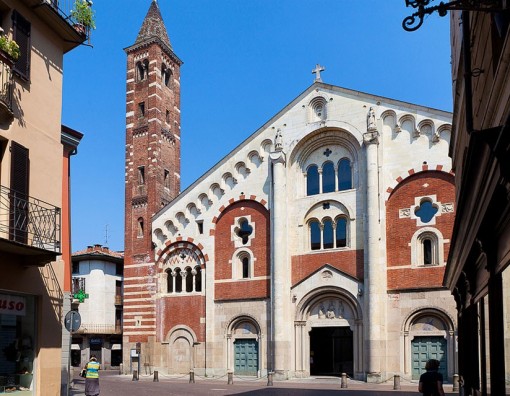Abbazia di Santa Maria
The complex of Rivalta Scrivia was built between 1180 and the mid-13th century and named after Holy Mary. The layout and elevation of the monastery comply with the dictates of the Cistercian rule, sanctioned by San Bernardo, which envisaged extreme simplicity and linearity of shapes, based on the module of the square; the central nucleus is the cloister from which the rooms intended for the common life of the monks develop (monks' wing, converts' wing, kitchen, refectory, and work areas). The outside of St. Mary's reflects the characteristics of Romanesque architecture in the brickwork, crowned by a frieze of hanging terracotta arches, today still visible in the transept, chapels, and eastern nucleus. The current appearance of the facade is due to work carried out in the late 17th century. The bell tower rises at the intersection of the arms of the transept and dates from the second half of the 16th century. The church has a Latin-cross plan, internally divided into three naves: the supports support ribbed cross vaults in the central nave and in the transept, simple cross vault in the minor naves; the barrel-vaulted chancel is formed by a straight-ended apse flanked on each side by two rectangular-plan chapels. The right arm of the transept communicates with the sacristy and the monks' dormitory, on the upper floor, by a double-ramp staircase. The 14th century brings a period of strong spiritual and economic crisis for the Abbey until Pope Sixtus IV turns the Abbey into a Commandery in 1478, favouring its rapid economic recovery. This period of "rebirth" is highlighted by the pictorial decoration still visible on some of the walls and pilasters. It is the work of Franceschino Boxilio, a painter from Castelnuovo.
Information and contacts
viale di Rivalta, 1/5 - 15057 Tortona (AL)
Frazione Rivalta Scrivia
Telephone: +39 (0131) 817.150
Telephone 2: +39 345 812.9721
E-mail: faustomiotti@libero.it
Link
https://www.cittaecattedrali.it/it/bces/105-abbazia-di-santa-maria-rivalta-scrivia




